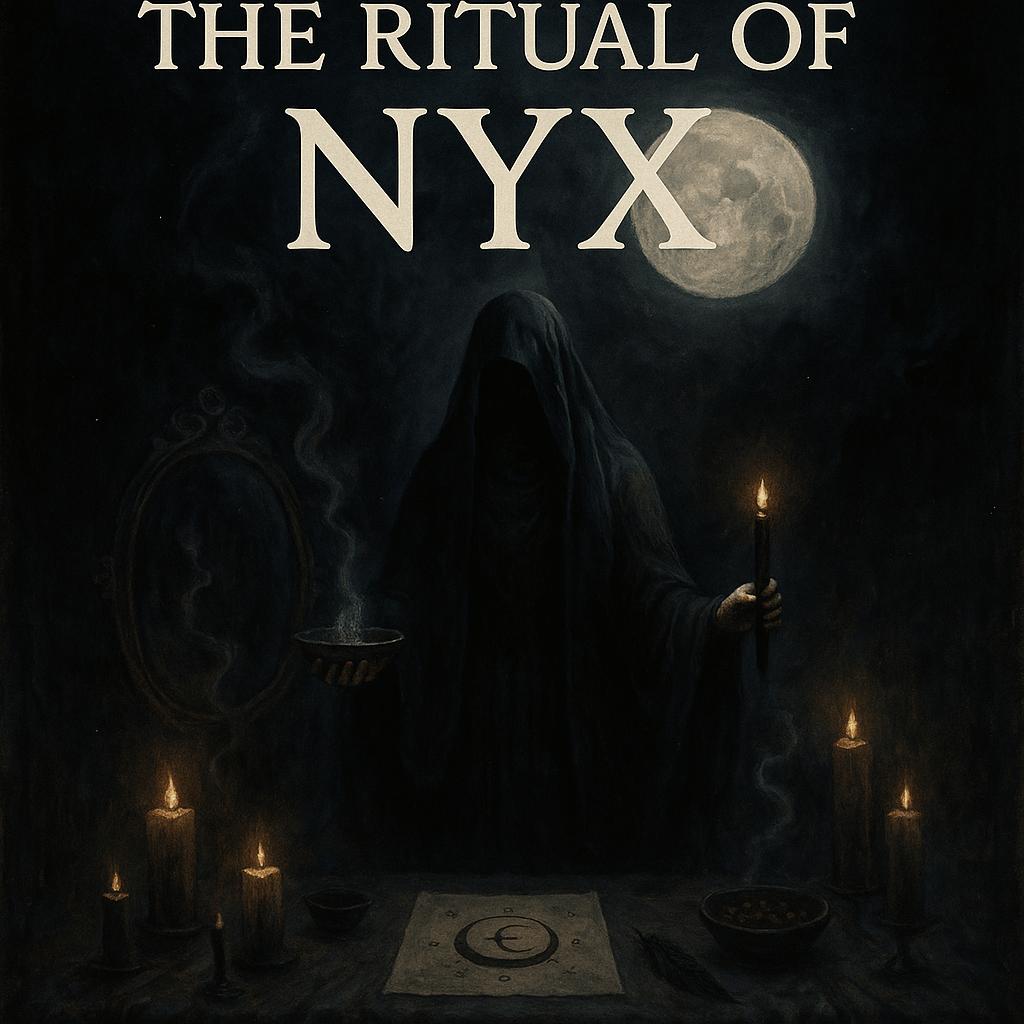Your cart is currently empty!

Unlocking the Mysteries: Delving into the Enigmatic World of Ancient Grimoires
A grimoire, at its core, is a book of magic. The term originates from the Old French word grammaire, initially referring to books of Latin grammar and later evolving to describe arcane texts that detailed rituals, spells, and invocations. These books were often shrouded in secrecy, their contents promising esoteric knowledge and the ability to influence the natural or supernatural world. Grimoires have captured the human imagination for centuries, serving not only as practical tools for magicians but also as symbolic artifacts of mystery and power.
Throughout history, grimoires have transcended their initial purpose as instructional manuals for magical practices. They represent a blend of spirituality, philosophy, and human creativity, reflecting the cultures and beliefs from which they emerged. From ancient Babylonian tablets to Renaissance manuscripts and their modern reinterpretations, grimoires offer a unique lens through which we can explore the evolution of magic, religion, and knowledge.
Historical Context
1. Ancient Origins
The earliest roots of grimoires can be traced to ancient Mesopotamia, Egypt, and Greece. These civilizations produced texts that blurred the line between religion and magic, embedding rituals and spells within their spiritual practices. The Babylonian Enuma Anu Enlil, for example, is a series of cuneiform tablets detailing omens based on celestial movements. These texts guided priests in predicting the future, a function that would later appear in medieval and Renaissance grimoires.
In ancient Egypt, the Book of the Dead provided instructions for navigating the afterlife, with spells designed to protect the soul and ensure a safe passage. Similarly, the Greek Magical Papyri (dating from the 2nd century BCE to the 5th century CE) included invocations, amulets, and rituals for summoning deities or achieving personal goals like love or protection.
These early examples laid the groundwork for later grimoires by formalizing the idea of written magical knowledge as both a sacred and practical resource.
2. Medieval Europe
The Middle Ages saw the proliferation of grimoires across Europe, often in the shadow of the Christian Church. Magic during this period was both feared and sought after, leading to a tense relationship between practitioners and religious authorities. While the Church condemned witchcraft and heretical practices, it also preserved certain magical texts, often blending them with Christian theology.
One of the most famous grimoires of this era is The Key of Solomon (Clavicula Salomonis), attributed to King Solomon but likely written between the 14th and 15th centuries. This text provides detailed instructions for summoning spirits, crafting magical tools, and performing rituals, emphasizing the importance of purification and piety. Another notable work, The Picatrix, a 10th-century Arabic text later translated into Latin, focused on astral magic, offering guidance on harnessing planetary energies.
3. The Renaissance and the Occult Revival
The Renaissance was a golden age for grimoires, fueled by the rediscovery of classical texts and the rise of Hermeticism. Scholars like Marsilio Ficino and Giovanni Pico della Mirandola explored the intersection of magic, philosophy, and science, leading to the creation and dissemination of new magical texts.
Cornelius Agrippa’s Three Books of Occult Philosophy (1531) is a cornerstone of Renaissance magic, synthesizing astrology, alchemy, and Kabbalah into a comprehensive framework. Another influential grimoire, The Book of Abramelin, details a rigorous ritual for achieving spiritual enlightenment and contacting one’s Holy Guardian Angel.
The printing press also played a crucial role during this period, making grimoires more accessible while simultaneously increasing scrutiny from religious and political authorities.
4. Modern Times
In the 19th and 20th centuries, grimoires experienced a resurgence, particularly among occultists and spiritualists. Texts like The Grand Grimoire, infamous for its instructions on summoning demons and making pacts, became widely available. Organizations like the Hermetic Order of the Golden Dawn and figures such as Aleister Crowley drew heavily from these texts, adapting their teachings for contemporary magical practices.
Today, grimoires continue to influence modern traditions like Wicca, Thelema, and chaos magic. They have also entered popular culture, appearing in novels, movies, and video games as symbols of forbidden knowledge and arcane power.
Famous Grimoires
1. The Key of Solomon (Clavicula Salomonis)
Often considered the archetype of medieval grimoires, The Key of Solomon is a practical manual for ceremonial magic. Divided into two books, it provides instructions for creating magical tools, summoning spirits, and crafting protective charms. The text emphasizes the importance of moral purity, including fasting and prayer, as prerequisites for performing its rituals.
Sample Passage:
“When thou wishest to make an experiment or operation, prepare beforehand all the requisites which are necessary; and when the time is come, assemble all these things in thy working place. Purify them and consecrate them as thou wilt be instructed.”
This passage highlights the methodical nature of ceremonial magic, requiring preparation and precision.
2. The Picatrix
A 10th-century Arabic text later translated into Latin, The Picatrix is a comprehensive guide to astral magic. It explores the connections between celestial bodies and earthly events, offering rituals to harness planetary influences for personal gain.
Key Features:
- Instructions for creating talismans imbued with planetary energy.
- Recipes for magical elixirs, some of which involve dangerous or taboo ingredients.
3. The Grand Grimoire
Known as the “Red Dragon,” The Grand Grimoire has a reputation for dealing with black magic and demonic pacts. It purportedly includes rituals for summoning Lucifer and striking bargains with spirits.
Sample Passage:
“To invoke Lucifer, thou must be in a place apart, on a night of the new moon, and call upon him with words of power known to thee alone.”
This grimoire embodies the darker side of magical practice, appealing to those seeking forbidden knowledge.
4. The Book of Abramelin
This 15th-century text outlines a months-long ritual for achieving spiritual enlightenment and contacting one’s Holy Guardian Angel. The book’s teachings have influenced modern traditions like Thelema.
Sample Passage:
“When thou hast perfected the preparations, thou shalt behold thy Angel face to face, and he shall guide thee in all things.”
5. The Arbatel of Magic
Unlike other grimoires, The Arbatel focuses on ethical and philosophical magic. It emphasizes wisdom and humility, presenting magic as a means of aligning with divine will.
Key Features:
- Seven aphorisms that form a moral code for practitioners.
- Instructions for invoking angelic beings rather than spirits or demons.
Sample Passages from Grimoires
Grimoires are often written in cryptic language, blending poetry, symbols, and arcane instructions. Below are two annotated excerpts:
- From The Key of Solomon:
“Before commencing any operation, thou must recite the prayer of Solomon, saying: ‘O Lord God, who created all things by Thy power and wisdom, grant unto Thy servant the wisdom to understand Thy works.’”
Interpretation: This passage illustrates the integration of faith and magic, emphasizing that the practitioner must seek divine approval and guidance.
- From The Picatrix:
“Take a sapphire stone and engrave upon it the figure of a serpent. Wear it beneath the waxing moon, and it shall bring thee protection from thy enemies.”
Interpretation: Here, the focus is on the symbolic and astrological properties of materials, a common theme in grimoires.
Themes and Common Practices in Grimoires
- Magical Seals and Sigils
- Used to represent spirits, planets, or intentions.
- Often drawn in rituals to invoke specific powers.
- Invocation and Evocation
- Invocation involves calling upon divine beings for guidance.
- Evocation focuses on summoning spirits or entities to carry out tasks.
- Ritual Tools
- Items like wands, swords, and chalices are consecrated for magical use.
- Detailed instructions for crafting these tools are common in grimoires.
- Secrecy and Initiation
- Many grimoires stress the importance of secrecy, often requiring oaths of silence.
Criticisms and Controversies
Grimoires have faced criticism from both religious and secular authorities. The Church denounced them as heretical, while skeptics dismissed them as fraudulent. Ethical debates also arise regarding certain practices, particularly those involving spirits or dangerous substances.
The Enduring Legacy of Grimoires
Despite their controversial history, grimoires remain powerful symbols of human curiosity and the pursuit of hidden knowledge. They continue to inspire practitioners, scholars, and artists, proving that their legacy transcends the boundaries of time and belief.
Conclusion
Grimoires are far more than dusty relics of the past. They are living artifacts that embody humanity’s enduring fascination with the unknown. Through their intricate rituals, evocative symbols, and arcane language, these magical texts have served as gateways to otherworldly power and personal transformation for countless generations. From ancient Mesopotamian tablets to medieval tomes and modern adaptations, grimoires reveal the universal human desire to understand and influence the forces of the universe.
While often shrouded in controversy—condemned by religious institutions, feared by skeptics, and dismissed by modern rationalists—grimoires remain a testament to the creativity, spirituality, and intellectual daring of their authors and practitioners. They offer insights into how past societies perceived the cosmos and their place within it, bridging the gap between science, religion, and art.
In the contemporary world, grimoires have evolved into cultural icons, inspiring modern magical traditions, literature, film, and art. Their mysterious allure continues to captivate readers and practitioners alike, proving that the quest for hidden knowledge and spiritual enlightenment is timeless. Whether seen as tools for practicing magic or as literary windows into human imagination, grimoires endure as a reminder of our unyielding drive to uncover the mysteries of existence.






